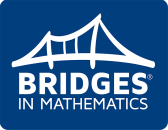The first two units focus on multiplication and multiplicative thinking. Unit 1 reviews and extends multiplication work from third grade and examines factors and products, as well as prime and composite numbers. Unit 2 delves deeper as students explore and extend strategies, concepts, and models related to multi-digit multiplication. Unit 3 utilizes a variety of tools to model, read, write, compare, order, compose and decompose fractions and decimals.
Units 4, 6 and 7 focus on fractions, decimals, division, and more multiplication. Various models help students understand more about operations with fractions and fraction equivalence, as well as the relationship between fractions and decimals. Students also discover the relationships between multiplication and division as they see that many multiplication strategies also apply to division problems. They solve division problems with and without remainders and begin exploring multiplication and division of simple fractions.
Unit 5 focuses on geometry and extends students’ understandings of area, volume, and symmetry. Students investigate, draw, and build two-dimensional shapes and the properties of those shapes to classify and analyze them. They also learn to use protractors to measure and construct angles.
Unit 8 integrates many key skills and concepts in the context of science and engineering by giving students the opportunity to design playgrounds. In the process, they generate and analyze data, and use a line plot to represent that data.
Content Outline and Samples
Unit 1
Multiplicative Thinking
- Models for Multiplication & Division
- Primes & Composites
- Multiplicative Comparisons & Equations
- Measurement Experiences
Unit 2
Multi-Digit Multiplication
& Early Division
- Building Multiplication Arrays
- Arrays & Ratio Tables
- Multiplication Stories & Strategies
- Early Division with Remainders
Unit 3
Fractions & Decimals
- Equivalent Fractions
- Comparing, Composing & Decomposing Fractions & Mixed Numbers
- Introducing Decimals
- Fractions & Decimals
Unit 4
Addition, Subtraction & Measurement
- Place Value & the Standard Addition Algorithm
- The Traditional Subtraction Algorithm
- Measurement
- Measurement & Data Displays
Unit 5
Geometry & Measurement
- Measuring Angles
- Polygons & Symmetry
- Area & Perimeter
- Angles in Motion
Unit 6
Multiplication & Division, Data & Fractions
- Multiplication & Division Strategies
- Revisiting Area & Perimeter
- Line Plots, Fractions & Division
- More Division
Unit 7
Reviewing & Extending Fractions, Decimals & Multi-Digit Multiplication
- Comparing Fractions & Writing Equivalent Fractions
- Decimals & Decimal Fractions
- Introducing the Standard Multiplication Algorithm
- Extending the Standard Multiplication Algorithm
Unit 8
Playground Design
- Introducing Playground Design
- Making Decisions
- Using Scale Models for Our Playground & Field
- Building Model Playgrounds
Number Corner
- Calendar Grid
- Calendar Collector
- Computational Fluency
- Problem Strings
- Solving Problems
